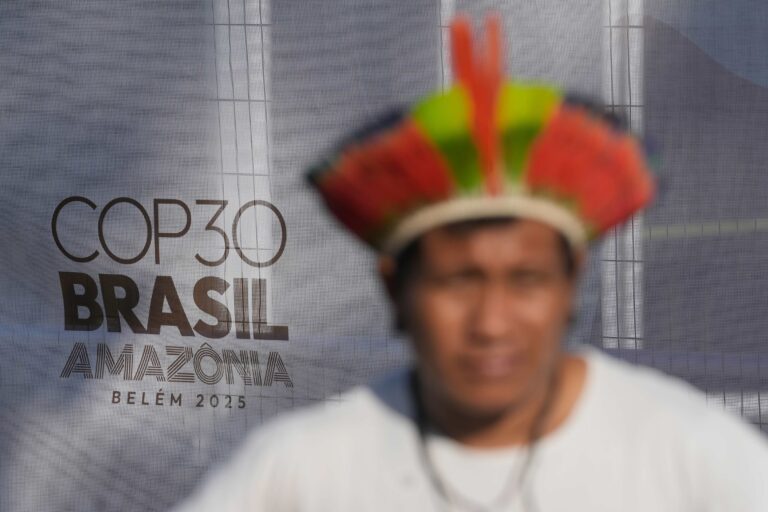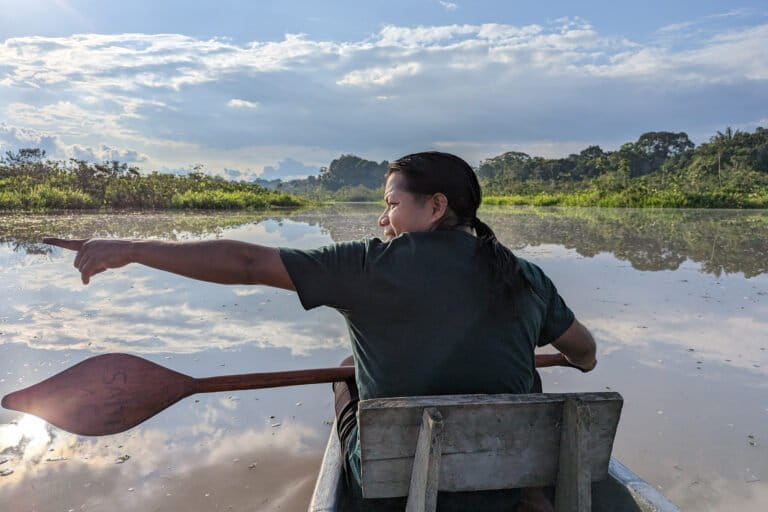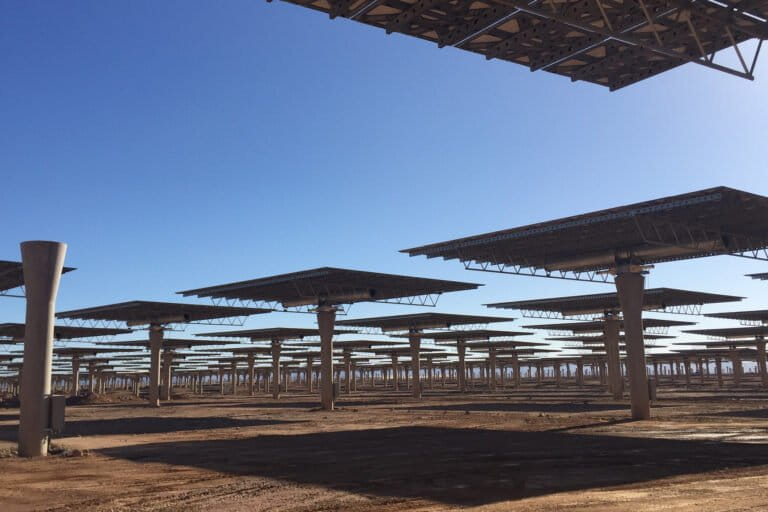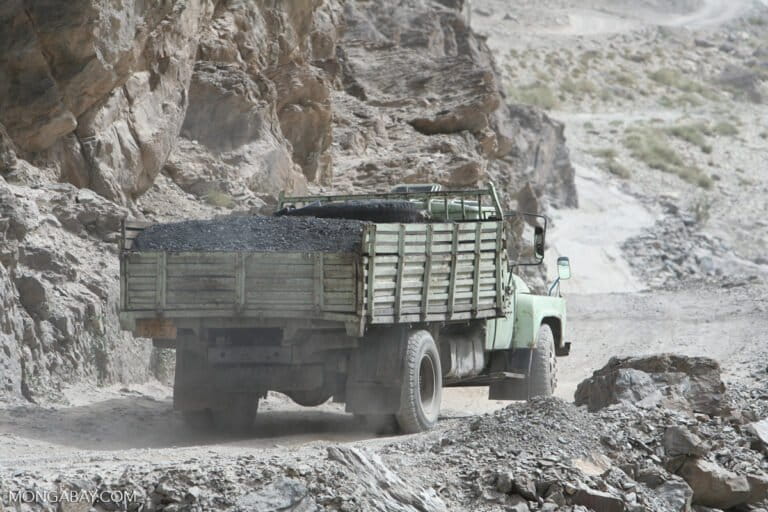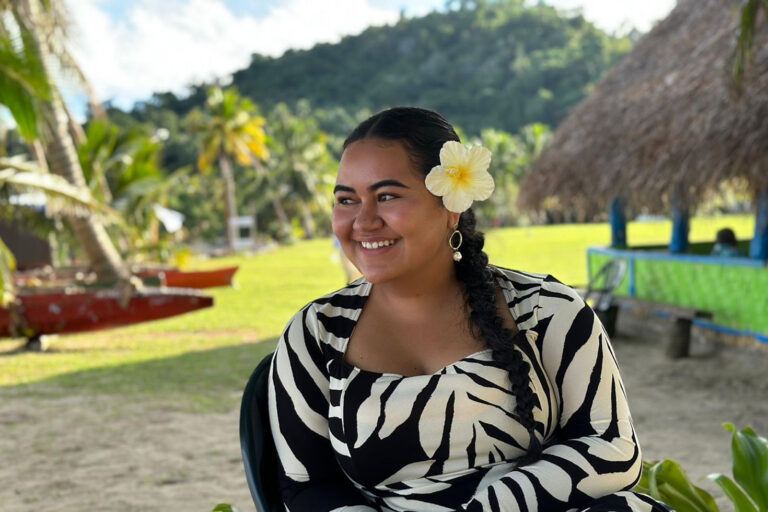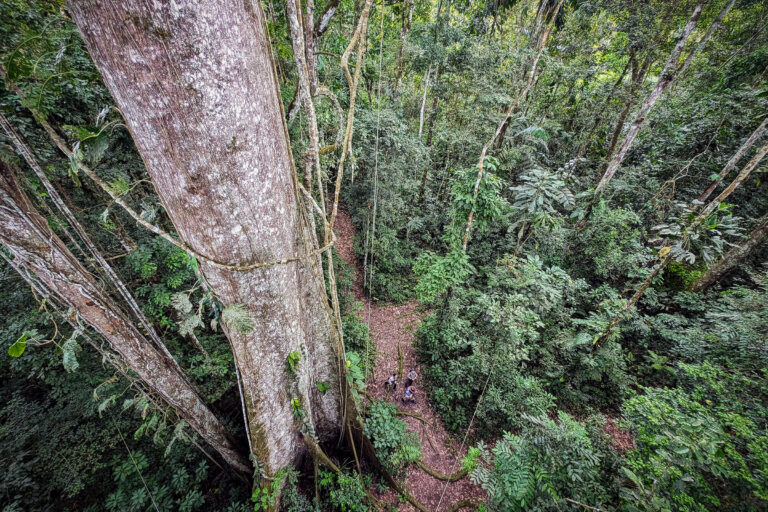- The Kabobo Natural Reserve, together with the adjoining Ngandja and Luama Katanga Reserves, protects nearly 7,000 square kilometers of important habitat for biodiversity, watersheds and forests near Lake Tanganyika.
- The Wildlife Conservation Society said that the involvement of local communities has been critical to protecting the area, and that their participation will continue in the management of the reserve.
- Surveys of the Kabobo Natural Reserve put the number of land animals present at 558 and plat species at 1,410.
- Scientists first discovered Prigogine’s black and white colobus monkey (Colobus angolensis prigoginei) in the area in the 1950s.
The governor of a province in the eastern Democratic Republic of Congo approved the boundaries of a 1,477-square-kilometer (570-square-mile) natural reserve on Wednesday.
“This is the first protected area to be established in the new Tanganyika Province,” said Governor Richard Kitangala in a statement released by the Wildlife Conservation Society, “and I hope it will be the first of several to come.”
By delineating the perimeter of the Kabobo Natural Reserve, the governor has laid the groundwork for the protection of the area, one that proponents say will continue to involve local communities around the reserve. WCS said began working with the people around the Kabobo Massif in 2009.

WCS representatives said that the location of the reserve next to several other reserves will bolster the protection of many important animal species “Africa’s most biodiverse ecoregion.”
“There are at least 34 globally threatened species and 110 species endemic to the Albertine Rift region,” which stretches along the borders of DRC, Tanzania, Burundi, Rwanda and Uganda, said Andy Plumptre, WCS senior scientist, in the release.
In the 1950s, Belgian researchers cataloged a bird call the Kabobo apalis (Apalis kaboboensis), which has not been found anywhere else. But conflict largely kept the flow of scientific information from the Kabobo area to a trickle for decades.
Plumptre was involved in more recent surveys of the Kabobo Massif, which i turned up four mammal and three plant species new to science in 2007. WCS said they also suspect the area hosts unknown amphibian species as well. The reserve holds 558 land animals and 1,410 species of plants.
Nearby, the Ngandja Reserve, which lies in the South Kivu Province to the north, and the Luama Katanga Reserve are known for elephants, lions and some 2,500 chimpanzees. They also protect important forests abutting Lake Taganyika, as well as the watersheds that are critical to the lake’s fisheries. Fish from Taganyika, Africa’s deepest lake at 1,470 meters (4,823 feet), are a lifeline for the people who live in the region, making up about 60 percent of the protein in their diets.

Together, these protected lands form an area about 25 times larger than the neighboring country of Burundi at 6,951 square kilometers (2,683 square miles).
The creation of the Kabobo Natural Reserve is also a big step toward accomplishing DRC’s conservation goals, WCS said.
“The government of Democratic Republic of Congo, with the support of WCS, is moving ahead to establish 17 percent of our nation as protected as they had pledged, identifying and working with local communities to protect the most important sites for conservation,” said Richard Tshombe, DRC Country Director for WCS.
Funding for the 7-year effort was also provided by the United States Agency for International Development, U.S. Fish and Wildlife Service, the Critical Ecosystems Partnership Fund, Rainforest Trust, the Arcus Foundation and the International Union for the Conservation of Nature.

Local leaders, including elders from Batwa pygmy groups, had a say in where the boundaries of the reserve would be. These communities will be involved in co-managing Kabobo, as the day-to-day protection of the area is now set to begin.
That input and participation has been critical in keeping the area intact before legal safeguards, such as Wednesday’s announcement of the boundaries, kicked in, said Deo Kujirakwinja, WCS project manager for the region.
“The proof of local community support for the Kabobo Reserve can be seen in the way the people have protected it over the past [six] years as increasing security has led to people moving to the area to settle and farm,” Kujirakwinja said in the WCS statement.
“If it wasn’t for this support we would have lost a large proportion of the reserve by now.”
Citations:
- Cohen, A. S. et al. (2016). Climate warming reduces fish production and benthic habitat in Lake Tanganyika, one of the most biodiverse freshwater ecosystems. Proceedings of the National Academy of Sciences USA. https://doi.org/10.1073/pnas.1603237113
Banner image of Kabobo Natural Reserve escarpment by Andy Plumptre/WCS







